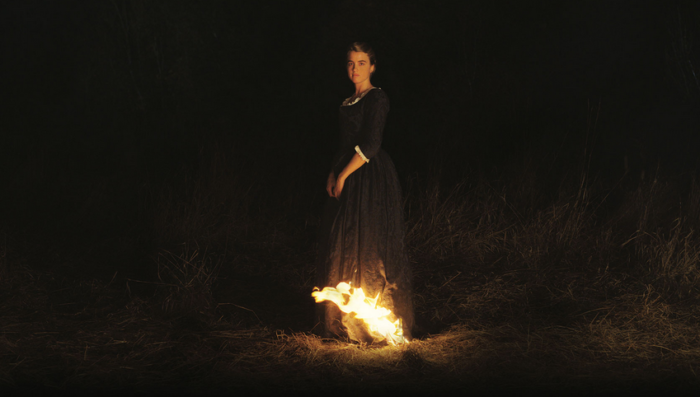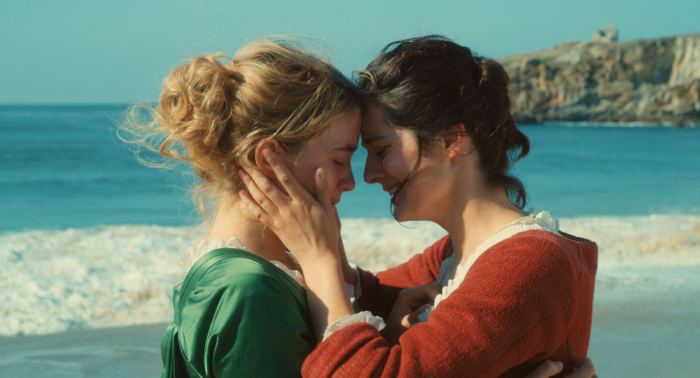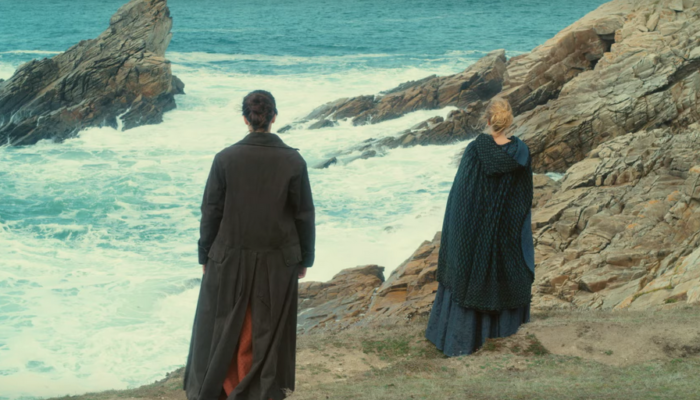
This is my last entry for this year’s Criterion Month. Can you believe it? I’m finally free. No more being confined to my arthouse movie prison (the prison bars are subtitles). I can finally go back to watching the bad kinds of movies I usually watch. I’ve had Hostel: Part II burning a hole in my queue all month. But real talk, I’m glad we do this month of celebrating more intellectually and emotionally challenging films. I’m glad we do this because if I’m being honest, I wasn’t chomping at the bit to watch this movie.
Sure, all of my film friends and everyone on Letterboxd were raving about this film back in the “Before Times”. I was excited to rate this on Letterboxd too because instead of the standard star rating you get to shower this film with flames! What kept me back from watching this acclaimed movie from Céline Sciamma for so long? It sounded boring. It’s a historical drama. Not my favorite category. I also try to avoid bummers. Two women in an even more restrictive time and place than today being denied their love for each other? It’s probably gonna end with the lady burning to death or something, right? I mean it’s in the title.
This movie is a bummer and it is a historical drama. Those reads were accurate. What I didn’t expect was that this movie isn’t boring and even though yes, a bummer, it’s very moving. Does it end in tragedy? Yes, but as Dr. Manhattan on the Watchmen TV show says, “By definition, don’t all relationships end in tragedy?” It’s not about how a relationship ends. It’s about how it begins, like a burning ember–I’m just gonna nip this fire analogy in the butt right now. What I’m trying to say is a great love story is both the highs and the lows. It’s about feeling things that are indescribable and there’s nothing more compelling than experiencing those feelings.
For the few people who end up reading this that don’t know anything about this movie here’s a brief plot synopsis. Everyone else can skip to the next paragraph. Noémie Merlant plays Marianne, a painter in 18th century France who travels to a secluded island to paint a portrait of a young aristocrat, Héloïse (Adèle Haenel) before she marries a Milanese nobleman. Héloïse lives a sheltered life. She doesn’t get to run or swim or even wander the grounds by herself. She also hates having her portrait done. Aye-Yi-Yi! How’s this portrait ever gonna get done?
What I love about this movie is it has no filler. We get right to the heartbeat of the story. Héloïse feels trapped and Marianne, even though she has some freedom also feels trapped. Marianne lives in her father’s shadow (he’s also a painter) and isn’t allowed to paint certain things. It’s through Héloïse that she finds a kindred spirit and the two fall for each other. It never feels rushed or disingenuous. It’s really romantic even if you know their time together is fleeting.
I also love that we get to see a lot of painting in this movie. I saw someone on IMDb claim that Marianne’s brushwork is not of the late 18th century but of a more modern style. They can go to hell (on fire) because it’s great. There’s nothing more therapeutic than watching someone turn a blank canvas into something beautiful. I don’t give a shit what brush strokes they’re using. This is good shit.
The better a movie is the more I struggle to write about it. Portrait of a Lady on Fire might be my favorite movie I watched for this year’s Criterion Month. I don’t feel the need to say much more than “Go watch it, it’s on Hulu.” Trust me, it’s not boring. You can trust me. Before Criterion Month I marathoned all the Jackass movies. I have a short attention span. I miss the point of a lot of things but I loved this movie. It’s not melodramatic and it’s not boring. It feels contemporary. The world has and continues to be a shitty place for women. This is a movie, where even though it’s brief, two women find freedom in their love for each other. What’s more inspiring than that? I’m probably not going to get that feeling when I watch Hostel: Part II. I can’t think of a better way to end my personal Criterion journey than with this film.




